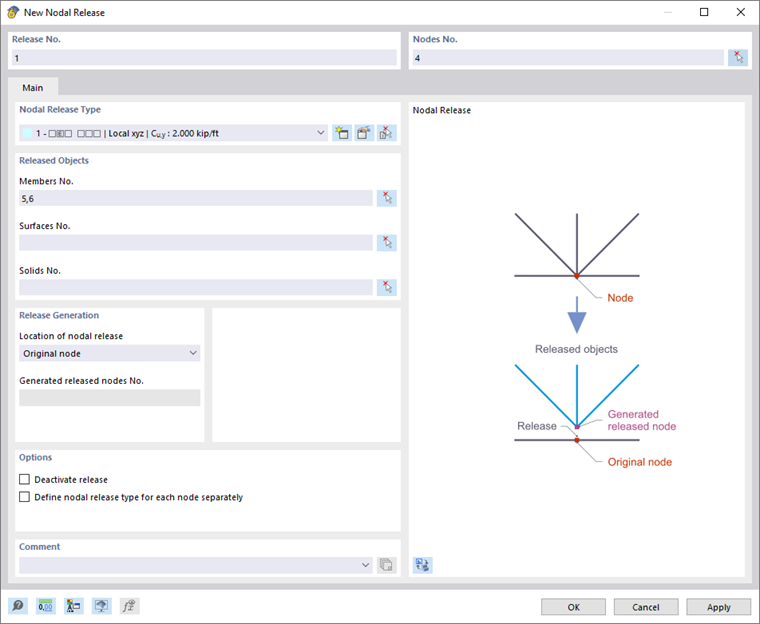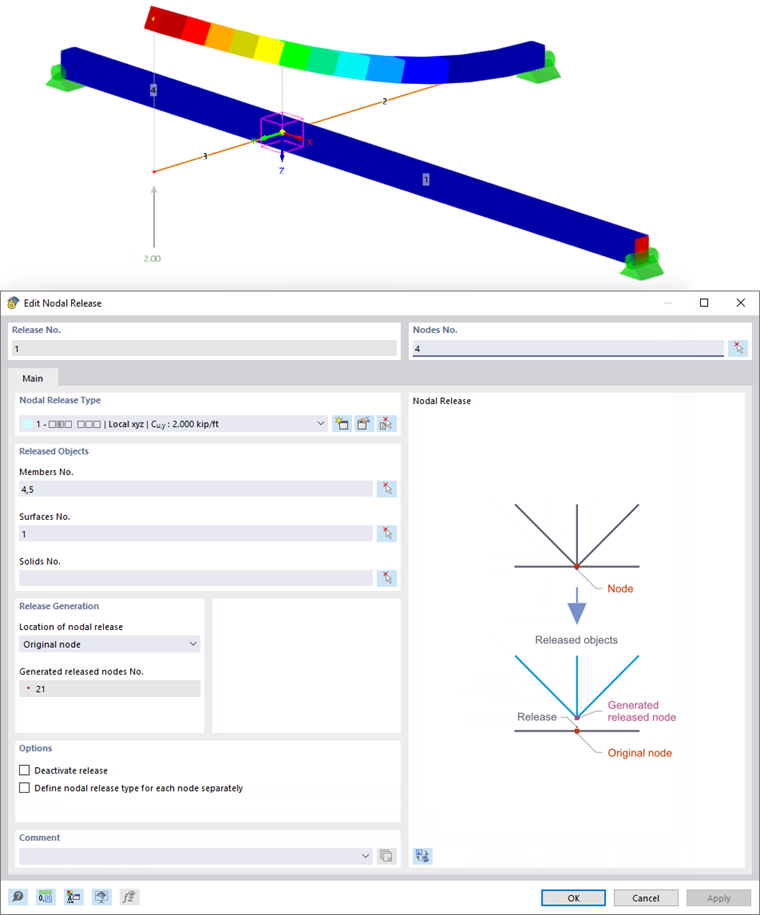A nodal release allows you to decouple the model at a specific location. You can use it to model, for example, a beam lying loosely on top of another (see the image Crossing Beams with Nodal Release). The degrees of freedom at the node are controlled by the "Nodal Release Type" that describes the properties of the hinge.
Nodal releases result in double nodes belonging to different parts of the model. An invisible member is created between these nodes. The internal forces and moments are regulated as for a member with the start at the original node and the end at the decoupled node.
Nodal Release Type
The properties of the release are described by a hinge, which in principle corresponds to a member hinge. Select the release type in the list, or define a new type using the
![]() button. The corresponding dialog box is described in the chapter Nodal Release Types.
button. The corresponding dialog box is described in the chapter Nodal Release Types.
Released Objects
Specify the numbers of the members, surfaces, and solids that are decoupled at the node. You can use the
![]() button to define the objects graphically in the work window.
button to define the objects graphically in the work window.
Release Generation
As mentioned above, RFEM creates a copy of the node. In the list, select whether to place the release (hinge) at the "Original node" or the "Released node". The setting specifies with which part of the model the hinge is deforming, thus having an effect on the results.
Options
The "Deactivate release" check box allows you to cancel the decoupling at the node for certain analyses without deleting the nodal release itself.
Example
A cantilever lies loosely on a downstand beam. The members at the node are decoupled for lifting loads if a nodal release type in the form of a shear force release for the direction uZ with a nonlinear effect is present. In addition, the rotation about the X-axis is released, which also acts nonlinearly.


